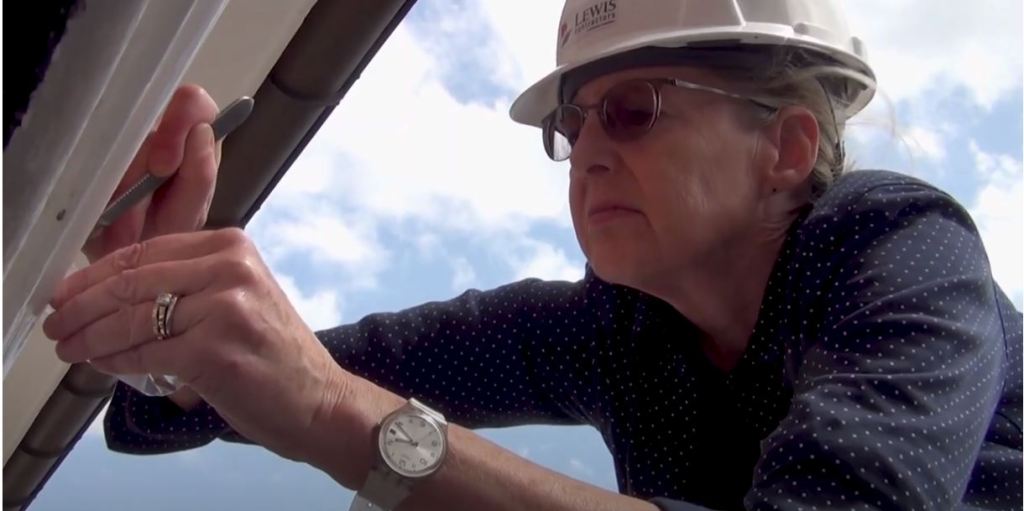By Dr. Brenna Spray, Outreach Coordinator
Today is International Women’s Day and we are shining a spotlight on world-renowned conservator and paint analyst, Dr. Susan Buck! Susan has worked in the field of paint and finishes analysis since 1991 and completed her PhD in Art Conservation Research at the University of Delaware in 2003 where she won an outstanding dissertation award from the College of Arts and Sciences. Her private conservation work includes analysis and treatment on objects and architecture for many institutions including the World Monuments Fund Qianlong Garden Conservation Project in The Forbidden City in Beijing. Susan has conducted paint analysis on numerous buildings throughout Maryland and MHT is lucky to have worked closely with her on major restoration projects such as the Maryland State House, the old Treasury Building, and the James Brice House.

Paint is one of the most prominent features of any given space, whether it is on the exterior covering of the dome of the State House or the interior finishes of the main rooms of the Brice House. Proper analysis of paint layers is essential, therefore, to understanding the original colors as well as the pigments and various ingredients used in each layer. During the State House dome restoration, Susan constructed a full chronology of paint layers from the most recent all the way to its original construction. Her analysis concluded that the dome was painted approximately 20 to 30 times in 235 years—and identified the soft, creamier color now visible on the dome. Her analysis also helped to determine proper preparation of surfaces and makeup of the paint ensuring a successful restoration. Her work at the Old Treasury has helped to determine the earliest window configurations as well as identifying a redwash that covered the brickwork.

Visible Light Lower layers 100X. This sample fractured apart, so the cross-section included here has the paints beginning with Generation 4; the other portion of this sample includes the original cream color and slightly later pinkish-peachy color, as well as later resinous and cream-colored paints. (Cross-section photos: Susan Buck)
Susan worked both inside and out at the James Brice House collecting samples from the interior plaster finishes and walls, the woodwork, the exterior cornice, and even a yellow wash on the brick masonry. Based on her analysis, paint and plaster conservators are able to recreate painted finishes throughout. For example, she discovered 16 layers of paint in the entry, beginning with a deep yellow distemper on top of a sanded plaster which gave the appearance of stone. There are three different generations of modern plaster skimcoats sandwiched between the 16 generations of surviving wall paints in this cross-section, some of which can be related to later paints on the cornice. Conversely, the door leading to the study only had six generations. It is likely that all the woodwork in this room was originally painted blue, and in the cross-section below it is possible to see that the distinctive blue paint became discolored and degraded before it was painted over with the tannish grain-painting sequence in the second generation. Generation 3 is a tan paint, which is followed by later paints that can be aligned with woodwork paints in the entrance hall. The photomicrograph of the paint stratigraphy shows that the earliest three paint generations became quite dirty before being painted over, so considerable time elapsed between those repainting campaigns.
Dr. Susan Buck has been leading the way in paint analysis and conservation for over 30 years, and MHT cannot wait to continue working on projects across the state with her and other visionary women in preservation. Keep an eye on our Facebook and Instagram pages throughout the rest of the month as we highlight projects from the National Park Service Underrepresented Community Grant project that is just wrapping up. This project is documenting sites related to the women’s suffrage movement, and the first post was about 817 North Charles Street in Baltimore.



